Laminitis and Founder: The Killer of Horses What we have learned about this condition from our experiences
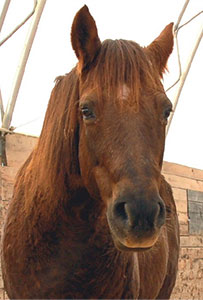 This post about laminitis and founder is information compiled from MY perspective and research together with reflections from Rosa. I am not an expert on this subject, however I want to share what we have learned through 12 years with Angelina and now Rosa, two of our horses who have passed from this condition. The information gathered here is in particular highlighting horses who are doing the FEEL Approach who might be more sedentary than horses who are ridden on a regular basis.
This post about laminitis and founder is information compiled from MY perspective and research together with reflections from Rosa. I am not an expert on this subject, however I want to share what we have learned through 12 years with Angelina and now Rosa, two of our horses who have passed from this condition. The information gathered here is in particular highlighting horses who are doing the FEEL Approach who might be more sedentary than horses who are ridden on a regular basis.
Angelina, our Paso Fino, suffered from chronic laminitis for 12 years and Cushing’s for 2 or more years, passing in the early spring of 2017. Rosa, an Andalusian-Dutch Warm Blood cross, suffered from acute laminitis and founder in the late spring/summer and transitioned in the summer of 2017.
Breeds
I believe laminitis impacts different breeds of horses. For instance, we have had a number of thoroughbreds for over twenty-five years and they have never had an issue with laminitis or being overweight. Their metabolism processes the sugars differently. The horses that seem more susceptible are the horses with ancestry from dry, arid countries for instance the Paso Fino’s whose ancestry stems from the Andalusians, Spanish Barbs from North Africa and the gaited Spanish Jennets. These horses were bred to move through rocky, barren lands not through lush green fields.
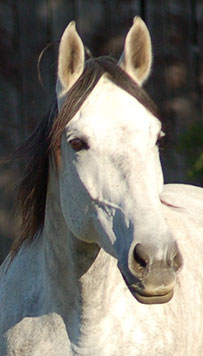 I was speaking with the manager of the Donkey Sanctuary in Ontario about how laminitis impacts donkeys. It was interesting to learn that laminitis is the number 1 killer of donkeys! In some areas of the world, grass has been labelled as a poison to donkeys. They are a desert animal and need very little food.
I was speaking with the manager of the Donkey Sanctuary in Ontario about how laminitis impacts donkeys. It was interesting to learn that laminitis is the number 1 killer of donkeys! In some areas of the world, grass has been labelled as a poison to donkeys. They are a desert animal and need very little food.
As an aside, when I was speaking with Adam he mentioned that The Donkey Sanctuary in England is finding that Equine Facilitated Learning is having much more of an impact than Therapeutic Riding!
What is Laminitis?
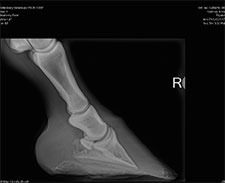 Laminitis is an inflammatory disease of the laminae of the horse’s hoof that manifests in lameness – usually the front feet. The result is the detaching of the coffin bone from the inner hoof wall. If it is severe it will affect all 4 feet. With Angelina, it was mainly in her two front feet. With Rosa, the laminitis first showed up in her two back feet and quickly manifested in her 2 front feet. With Angelina, it was a slow progression; with Rosa, the symptoms started May 24th with full-fledged laminitis in all four feet within 5 days and quickly became founder in her two front feet.
Laminitis is an inflammatory disease of the laminae of the horse’s hoof that manifests in lameness – usually the front feet. The result is the detaching of the coffin bone from the inner hoof wall. If it is severe it will affect all 4 feet. With Angelina, it was mainly in her two front feet. With Rosa, the laminitis first showed up in her two back feet and quickly manifested in her 2 front feet. With Angelina, it was a slow progression; with Rosa, the symptoms started May 24th with full-fledged laminitis in all four feet within 5 days and quickly became founder in her two front feet.
Founder
Without all the technical terminology, founder is when the horse’s hoof wall is so detached, the coffin bone separates and ‘sinks’ and/or rotates. In actual fact, the bone appears to sink as the hoof capsule starts to rise up causing pain and inflammation not only on the unsupported coffin bone but pinching the coronet band at the top of their feet.
You have to find the cause for the laminitis before you can fix it mechanically in the foot.
There are two main types of laminitis: EMS Equine Metabolic Syndrome (or called IR Insulin Resistant) and PPID Pituitary Pars Intermedia Dysfunction. Occasionally it can be caused by black walnut shavings.
The best website I found with comprehensive information is ECIRhorse.org which stands for Equine Cushing’s and Insulin Resistance Group. They host an annual conference called NO Laminitis which is taking place in Arizona this year October 27 – 29, 2017.
The first step is to determine whether it is EMS or PPID – through blood tests (EMS will show above normal insulin with normal blood glucose) and an analysis of the symptoms presenting themselves.
EMS
Equine Metabolic Syndrome is characterized by a loss of insulin sensitivity at the cellular level, creating a metabolic disorder. The nutrition and health of horses is closely tied to their gastrointestinal microflora. Bacteria break down plant structural carbohydrates and produce volatile fatty acids, which are a major source of energy for horses.
Excess nonstructural carbohydrates (starches, fructans, or simple sugars) that are not digested in the foregut enter the cecum and colon, where bacterial fermentation produces byproducts including lactic acid and gas. This can lead to colic or lead to the development of laminitis which often occurs after the overeating of grain or after feeding on lush pastures rich with nonstructural carbohydrates (this is what happened to Rosa!).
The main treatment with EMS is a low-carb, low-fat, and mineral balanced diet. The hay should be soaked to remove the sugars.
There may be an underlying emotional reason that the horse may be out of balance in the first place. This makes them susceptible to various conditions. In Rosa’s case, she was experiencing grief from the death of Thor, her soul mate, the previous summer.
Symptoms
- Crusty neck
- Fatty deposits in the flanks and tailhead
- Fatty sheath or udder
- Puffiness in the hollows above the eyes
- Generally overweight
PPID
PPID is also known as Cushing’s Disease and generally affects older horses. The condition is due to over-activity of one part (the intermediate lobe) of the pituitary gland resulting in the excessive release of certain metabolically active proteins and hormones. The pituitary gland is located beneath the brain, above the roof of the mouth, and releases its products in response to signals from nerves that originate in another area of the brain called the hypothalamus. Damage to these nerves causes the pituitary to enlarge and produce excessive quantities of hormones. The hormones known to be of importance are adrenocorticropic hormone (ACTH) and cortisol. Excessive cortisol can cause immune deficiency causing susceptibility to infections and interference with metabolism, resulting in muscle wasting. The disease progresses gradually as the nerves to the pituitary slowly degenerate.
Horses can be both EMS and PPID. Angelina was a combination of both.
Test ACTH levels and monitor the horse’s symptoms. However, seasonality can affect the levels of ACTH concentrations.
Symptoms
- Lethargy
- Muscle loss
- Abnormal hair coat: early or late shedding/hair growth, failure to shed out completely or at all, a long curly coat
- Excessive sweating (Angelina) or failure to sweat
- Onset of Laminitis occurring in February (due to changes in light) or fall
- Abnormal fat distribution
- Excessive drinking and urination
- Decreased immunity
 Treatment of EMS
Treatment of EMS
Lifestyle
There is no quick fix! All aspects need to be considered, creating a new lifestyle for your horse.
Pain Control
Laminitis is a very painful condition. The laminae, which normally connect the coffin bone with the inner surface of the hoof capsule, separates. The weight of the horse and the forces of movement continues to put pressure on these delicate tissues causing more tearing, crushing the blood supply of the sole and coronet, creating unrelenting pain.
It is very hard to see your horse in pain! Your first instinct is to fix it and stop the pain. However, you cannot get the pain under control unless you eliminate the cause or trigger of the laminitis.
“Remember, the goal of laminitis treatment is not to get rid of the pain; it’s to stop ongoing damage and heal the hoof. This takes time. Anti-inflammatories are given to prevent excessive inflammation which can cause even more damage. This does improve pain, but that is not their primary benefit. While healing is going on, the tissues are weak. The horses are a large animal and can easily damage fragile laminae, especially if pain is being blocked. With acutely damaged feet, the best place for a horse to be is lying down on a soft, comfortable surface. When he feels better, he’ll get up.”
Eleanor M. Kellon, VMD
NSAIDS (non-steroidal anti-inflammatory drugs) are not advisable past the acute stage of laminitis. They will work against the horse long term, impeding recovery.
Icing their feet, especially around the coronet band, can be helpful. Easiest to do with the sport wraps that you insert the ice packs into and velcro on.
Boots with laminitic gel pads can help if it is not acute laminitis, keeping in mind that they are not a long-term solution.
Diet
Usually the laminitic horse is overweight. This can be an overconsumption of grain or after feeding on lush pastures or a combination of both. Rosa was overweight with obvious fatty deposits and crusty neck. I believe being overweight predisposes horses to laminitis and other health concerns. I learned a simple way to tell if your horse is possibly overweight – stand directly behind them and if the stomach protrudes past their rear end, they may be overweight. Of course, it depends on your horse’s physique.
Be ruthless: cut out all sugars! This includes treats even carrots and apples. Take your horse off rich pastures – use dry lots; paddocks with lots of weeds, rocks, and sand; a paddock system called paradise paddock; strip grazing, and/or muzzles. Angelina had a muzzle on for six months of the year. She understood that is what she needed and was fine wearing it. There is an excellent article in Horse Journals on grazing muzzles. https://www.horsejournals.com/horse-care/feed-nutrition/grazing-muzzles
Feed your horse timothy or grass hay as the alfalfa hay is richer. During my research, I learned that it is good to give your horse a small amount of alfalfa hay as it is rich in needed proteins.
Soak your horses hay for at least 20 minutes to remove the sugars before feeding it.
In my research, I discovered that when horses need to lose weight the minimum amount of hay they need to eat daily is 1.8% of their body weight. This involves weighing a flake of hay and doing the math. I was shocked to realize that Rosa only needed 4 flakes of hay especially as she was not moving in her stall and was not burning calories. I felt awful and had to really restrict my need to give her more food.
We soaked timothy hay cubes to provide a base for her medications which gave her some additional forage.
Take your horses off of all grain supplements even the ones that say they are just proteins and minerals. If you read the labels you will find they average 13% to 15% NSC nonstructural carbohydrates which usually occur from the binding agents. I sourced a vitamin call Zenamin made in Canada that provides all the necessary vitamins with a 3% NSC. Ensure you read the labels of the natural supplements.
It is a good thing to get your hay (if from an outside source) and the grass from your paddocks analyzed. However due to problems with our hay supply this year, we have limited choice and will be dealing with a number of different suppliers. In addition, each of our paddocks have a different mix of grasses and weeds.
Generally, grass sugars are higher during new growth early in the Spring, immediately after a stress period ends, and in the fall. The plant stores most of its sugar in the lower 3-4 inches of the plant stems, and in its budding seeds – and levels can vary significantly due to a variety of factors & influences including a very wet spring and summer. Sugar levels can fluctuate hour by hour, depending on the weather and amount of sunlight. Usually the time of the least amount of sugars in the grasses is between 5am and 10am. A great website is www.safergrass.org.
Movement
In the wild, horses move an average of 20 miles a day, over rugged terrain, to seek water and forage keeping lean and fit. Domesticated horses, in a FEEL environment, can stand in a field of grass with very little movement – being content to munch on easily accessible grass, when not being of service to humans. Our horses are very happy to do this. Movement is important to a horse’s circulation, digestive system, stress relief and most critically keeps the blood flowing into their feet.
Our horses are outside 24 hours a day except when they are brought in for morning feed and may stay in for a workshop or private sessions. Based on our smaller herd sizes, we can rotate which horses stay in.
One of the ways we have tried to encourage movement in winter is to separate their source of water from their source of food. Combined with multiple feed stations, this keeps them moving from one location to another. Slow feeders help with this approach.
However, a cautionary note! I had heard that if horses were given free choice hay, they would naturally stop eating and regulate themselves once they realized that it would be there 24 hours a day. So last winter we offered free choice hay in our hay huts and slow feeders. Rosa did not get the memo and started to put on weight during the winter which is normally a time of slimming down. Again, I think this is a breed predilection.
In the summer, creating movement is more problematic. We do not fertilize or reseed our fields allowing for native grasses and weeds to cohabit together (within reason), creating a need for the horses to move in order to forage for the tastier tidbits.
Separating areas within a bigger paddock space allows for controlled intake of the richer grasses especially during spring and fall when the sugars are higher in the grass. We also have hillier sections of our property which naturally have less grass due to rainfall moving to the lower sections of our land and together with a sandy base, there is not as much growth.
Ferriers
Over the last number of years, we have worked with two ferriers to look after our herd of horses. Originally, we had a traditional ferrier as we were still playing polo and it was a requirement to have shoes on the horses’ feet. When both of us stopped playing polo, we took the shoes off our horses. When Contendor arrived years ago, he had a huge crack in one of his front feet which necessitated shoes at the time to manage the condition. We were introduced to barefoot trimming when Angelina was suffering from laminitis and Rosa received the barefoot trim as well. So, we have two ferriers at present.
When Rosa’s x-rays showed an acute stage of founder in her front feet, our vet recommended a farrier who specialized in laminitis and founder as a last resort. The ferrier had become passionate about helping horses with laminitis when his wife’s horse foundered and he was determined to save her – he did and she is his wife’s riding partner again.
During the consultation with the ferrier, he acknowledged that Rosa’s condition in her front feet was critical. Both he and our vet were astounded by Rosa’s ability to stand and lift up her feet at this point. In most cases the horse would be lying on the ground. While Rosa was incredibly stoic and strong, this was part of our issue of not identifying the laminitis sooner!
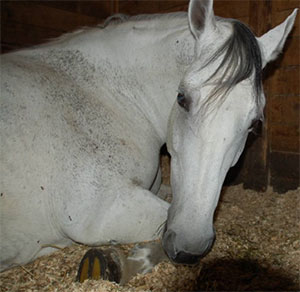 The ferrier said that at this point it was important for Rosa not to move and risk further detachment of the laminae. To support her coffin bone in the two front feet, as they had both sunk and rotated, he recommended a shoeing procedure: He put a netting over both feet, applied a heart bar shoe, and then poured fast acting acrylic to form a ‘dome’ of support for the foot to stay together. The heart bar takes the weight off the sole and onto the hoof wall. He acknowledged this would be a long and painful process for Rosa – three months minimum for absolute rest and no movement. It would take 9 months for a new foot to regrow. We connected with our animal communicator to obtain Rosa’s approval to proceed. Rosa was determined to help horses with this terrible condition and agreed to move forwards.
The ferrier said that at this point it was important for Rosa not to move and risk further detachment of the laminae. To support her coffin bone in the two front feet, as they had both sunk and rotated, he recommended a shoeing procedure: He put a netting over both feet, applied a heart bar shoe, and then poured fast acting acrylic to form a ‘dome’ of support for the foot to stay together. The heart bar takes the weight off the sole and onto the hoof wall. He acknowledged this would be a long and painful process for Rosa – three months minimum for absolute rest and no movement. It would take 9 months for a new foot to regrow. We connected with our animal communicator to obtain Rosa’s approval to proceed. Rosa was determined to help horses with this terrible condition and agreed to move forwards.
As time went on, Rosa began lying down most of the day. While the ferrier was not as concerned (he wanted the feet to have no pressure), our vet was anxious. Horse’s muscles can start to atrophy after 12 hours. Most horses will lay down at the most 4 to 6 hours. We had to get Rosa up and standing at a minimum every 12 hours. At first, she would stay standing (with increased heart rate up to 90 beats per minute – average is 30) for an hour or two. This over time became 15 minutes.
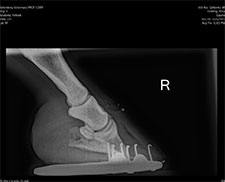 Further x-rays were taken. The fantastic news was that the back feet – both sole depth and rotation were almost back to normal! The left front foot had turned the corner and started to change. Rosa could feel her back feet healing and they felt lighter. However, the right front foot had continued to drop and rotate. Our ferrier revealed that Rosa was the worst case he had seen. Rosa was asked again if she wanted to continue. Absolutely was the answer. In order to relief the pressure the ferrier cut away part of the acrylic dome on the tip and abraded the top of her coronet band to release the pinch.
Further x-rays were taken. The fantastic news was that the back feet – both sole depth and rotation were almost back to normal! The left front foot had turned the corner and started to change. Rosa could feel her back feet healing and they felt lighter. However, the right front foot had continued to drop and rotate. Our ferrier revealed that Rosa was the worst case he had seen. Rosa was asked again if she wanted to continue. Absolutely was the answer. In order to relief the pressure the ferrier cut away part of the acrylic dome on the tip and abraded the top of her coronet band to release the pinch.
While there was some initial relief of pain from her feet, pain started to occur from the rest of her body – muscles were starting to cramp and her stomach enzymes started to fail. I am sure this came from Rosa lying down almost 24 hours a day. While an incredible fighter, Rosa finally said she could not handle the pain anymore.
 What I have come to appreciate is that I want a ferrier who knows horses’ feet and is willing and prepared to look at each horse as an individual and do the best service for that horse whether it is shoes or trim. This is the similar approach we recommend in the FEEL Approach – listen to what each horse wants!
What I have come to appreciate is that I want a ferrier who knows horses’ feet and is willing and prepared to look at each horse as an individual and do the best service for that horse whether it is shoes or trim. This is the similar approach we recommend in the FEEL Approach – listen to what each horse wants!
It is important for your vet and ferrier to work together as a team. X-rays are crucial to know what exactly is happening, giving the ferrier valuable information for trimming as well as knowing the progress or lack of that is occurring. There are a number of ways to read how much rotation is present; however, if the same approach is taken each time, you can use it as a base line as you move forwards.
Lessons Learned
Recognize breed heritage for food requirements and sensitivities
Assess any emotional concerns and look for any stresses that can be impacting your horse
Do not let your horses get overweight – look for the crusty neck and puffy eyes as signs of EMS
As soon as you think they are lamanitic – do the next 3 things all at the same time!
- Reduce pasture grazing, soak hay, remove grain, and provide minerals.
- Get your ferrier in for an evaluation
- Contact your vet to confirm, find out the cause, and do x-rays of their feet
If necessary put boots on the affected feet right away (we have found Soft Ride with the special lamanitic gel insert the best; they are also a soft material so they don’t rub the back of the horse’s foot) so they can continue to be moving outside maintaining blood flow to the feet.
A cheaper solution is to buy foam insulation 1 1/2 “ thick at a hardware store and duct tape it to the bottom of their feet.
If necessary fill an enclosed outdoor round pen with sand for a soft footing. Once the laminae have detached to a great degree, it is too late for movement to help and all movement has to stop or the damaged laminae will continue to be torn.
If your horse is a ‘sinker’ and the coffin bone has started to come through the sole of their foot, it is a very difficult battle for them to come back but not impossible.
Treatment of PPID
If the PPID horse has EMS as well, treat the laminitis as above. The current treatment for PPID is with the use of the drug pergolide mesylate. Many, many years ago we treated Angelina with Chaste Tree Berry which had an impact in the early stages but was not effective as it progressed.
Rosa’s Medications
Traditional
Butte: Nsaids decrease inflammation by blocking prostaglandin formation in the tissues however they can cause ulcers by blocking beneficial prostaglandin formation in the stomach
Thyroxine
Omeprazole Stomach Guard
We did previcox initially and then Acetominophen 20 tablets 2x day
Herbal Products
Blue Green Algae from Klamath Lake: It is especially high in chlorophyll; removes toxins from the body; reduces pain and inflammation; provides more focus and mental clarity; enhances the immune system; encourages the regeneration of damaged hoof tissue; healing injuries through cellular regeneration and improved circulation; promotes digestive health, nutrient absorption and alkalinity; helps with allergies and respiratory issues.
Rosa thought the Blue Green Algae was a remarkable product – an ancient food providing healing at a deep cellular level. She calls chlorophyll ‘liquid light’ which is what is found naturally in grass. She is healing from the inside out. It turned everything around for her and allowed for new perspectives.
Zenamin: Pure vitamins including kelp, magnesium, and biotin
Probiotics Generation 2
Vitamin C
Salt
When asked which products helped best to alleviate the pain, she said the acetaminophen did help but wore off quickly. She felt the most effective combination was the acetaminophen and the blue green algae.
The blood sugar formula was a good balancer.
The Vitamin C initially helped but then the effects declined.
Homeopathic
Blood Sugar Formula from Riva’s Remedies for Equine Metabolic Syndrome
Rhus tox
Ignatia Amara 200 transmuting grief
Pulsatilla 200 for bottled up emotions
Rosa felt the homeopathic for emotions helped her process fear and grief.
Essential Oils
Initially Rosa did not want to combine the homeopathic and herbal remedies with the essential oils.
Frankincense – in the last week Rosa was licking this oil out of my hand
Rosa felt the frankincense oil really impacted the virus and was very effective – almost like an antibiotic!
Recommended Products
While we did not use these products with Rosa, they are products that numerous people have used successfully for different stages of laminitis and deserve mention.
Tumeric mixed with ginger and ground black pepper
Metabarol with resveratrol from Equithrive
SimmIRdown from Herbs for Horses
GlucoGard for those folks in Europe
Injur Ease from Riva’s Remedies
Joint Clear from Riva’s Remedies
AdrenaFX and Antiflam from Omega Alpha
Seaweed Supplements – production of thyroxine and thyroid hormones
Services
Massage especially the area of the crusty neck
Bowen
Sound Therapy –Rosa thought the activities and clearing ceremonies with the crystal bowls were awesome!
Energy work: Personal and distant healing– Rosa really appreciated the energy work. During the times of energy healing, she was pain free and felt connected to her body. She felt lifted up and lighter. However, there were times when it was too much for her and she actually created a bubble around herself! Part of this was that she wanted to send healing energy back to anyone who was helping her and ended up depleting her.
Laser
Chiropractic and Acupuncture could have been helpful with the right practitioner
Emotional Wellbeing
The horses are choosing to help humans come back into balance. Sometimes our horses will pick up the emotions from the people they are working with and will not be able to totally clear them from their energy field. As their partners, it is our responsibility to clear their fields as well as our own. The horses are asking us to clear their energy field on a much more frequent basis and absolutely at the end of each workshop. Rosa is suggesting that we take the energy from the horse’s feet and up their legs, sweep energy up to their belly (where they process) then up and out the top through the rear.
Increasing Occurrence
I am hearing more and more reports of a large increase in the number of cases of laminitis over the last two years – from vets and concerned horse owners. In the bigger picture, I believe autoimmune issues are on the rise due to environmental factors. Pollutants come in the form of rain that falls on our fields, contaminating our soil which in turn nourishes the grass that feeds our horses. This then feeds the gastrointestinal microflora in their guts creating blood sugar level fluctuations.
As caretakers of horses we need to be proactive in supplying healthy nutrients to our horses, supplementing their dietary needs which was normally found in hay, in order for them to sustain their natural vitality.
Rosa’s Perspective
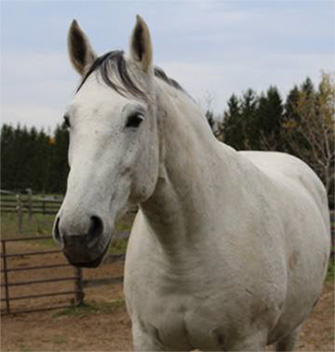 Before Rosa passed, she shared that laminitis is caused by a virus. She showed a picture of a plane spraying the atmosphere and then a picture of rain with each droplet containing the virus. As the rain falls, the virus is absorbed into the earth. If it has been a wet year the virus does not get killed and the process begins.
Before Rosa passed, she shared that laminitis is caused by a virus. She showed a picture of a plane spraying the atmosphere and then a picture of rain with each droplet containing the virus. As the rain falls, the virus is absorbed into the earth. If it has been a wet year the virus does not get killed and the process begins.
If a horse has an emotional imbalance, this lowers their immune system making them more susceptible to the virus.
As horses ingest grass that has been nourished by the soil, this creates a problem with insulin resistant issues, impacting the thyroid and kidneys. Rosa feels the blue green algae supports the affected kidneys as they are a soft protein and easy for the kidneys to process.
As horses continue to evolve their consciousness, their 5th dimension body is eating 3rd dimension food. Rosa is committed to finding a way to combat this horrible disease from the spirit world!
In conclusion, I hope this information has been helpful and that someday horses will no longer need to suffer from this terrible disease. Both Rosa and Angelina created the opportunity to pass along incredible wisdom to me before they transitioned. What amazing teachers they are! The horses are committed to our human evolution.
Wendy Golding
Horse Spirit Connections
2017
Note on Blue Green Algae
I am very impressed with this product. Please ensure you purchase it from a reputable distributor. There is an excellent paper on Primordial Food, aphanizomenon flos-aquae by Christian Drapeau, MSc.
Spirit Walker is one of our horses that was suffering from a neurological disorder – an increased PTSD response which resulted in having to tranquilize him in order to move him from the barn to the paddock. After taking the blue green algae for two weeks, he became a relaxed horse and we no longer needed to give him a tranquilizer! Spirit is back!
Encore has a respiratory issue aggravated in the summer months from humidity and allergic response to bugs. After four weeks, we were able to take him off his medications.
Both Andre and I are taking it as well as Mia (our dog who has strong allergy symptoms).

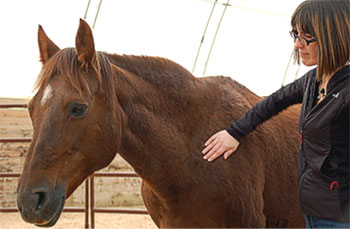 Treatment of EMS
Treatment of EMS